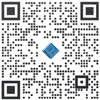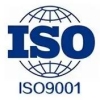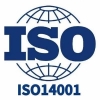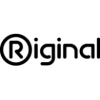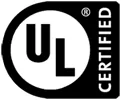What are the core values of component manufacturers behind smart medical treatment?

Nowadays, the traditional medical industry is facing the pain points of uneven resource distribution, insufficient labor supply and low collaboration efficiency, which accelerates the deep reform of the medical industry. At the same time, the dual buff superimposed by the underlying technology upgrade and policy traction makes smart medical stand in the tuyere. Unlike the consumer sector, however, the healthcare industry has extremely stringent standards for core technologies, including chips and components. For component manufacturers, how to open up the upstream and downstream industrial chain by virtue of their own hard strength will become the key factor for them to surprise and win in smart medical innovation.
Medical care has always been an important industry for the national economy and people's livelihood, and the industrial demand is only increasing. Technological change is promoting the practical implementation of smart medical treatment. For example, visual and natural language processing technologies in artificial intelligence technology can be directly applied to medical images, smart medical records and other scenes. More accurate and efficient diagnosis and treatment can be achieved in radiology, pathology, ultrasound and other medical equipment; 5G technology can meet the needs of telemedicine, such as 5G B ultrasound, remote first aid, remote consultation, etc. Cloud service technology can integrate data, realize data sharing and real-time analysis. Overall, the underlying technology is penetrating the three dimensions of prevention, diagnosis and treatment.
At the same time, the policy is also leading the rapid development of the medical industry. Review the national smart medical policy in the past decade. Since 2015, The State Council has issued Guidelines on Actively promoting the "Internet Plus" Initiative, which has begun to focus on the integration of mainstream advanced technologies and medical fields. Since then, "Healthy China 2030" has effectively promoted the integration of domestic medical and big data technologies. The policy guidance of Internet + medical treatment is gradually falling behind the reality, issuing management methods and standard system.
Since 2019, the National Health Commission has launched a 0-5 grading and evaluation system for smart services in medical institutions, in an effort to promote the construction of smart medical services and improve medical services. In the "14th Five-Year Plan for National Medical Security" and "14th Five-Year Plan for the Development of Medical Equipment Industry" issued by The State Council, it is also clearly proposed to realize the deep integration of informatization and manufacturing industry and the construction of medical insurance informatization. All kinds of policies have provided strong guarantee and practical support for the development of smart medicine.
Technology and policy are the soil for the development of smart medicine. However, how big is the market scale of smart medicine on the soil? How high is the technical threshold?
The huge market growth space brings severe challenges
From the analysis of research institutions, there is a large market space for the development of smart medicine. At the same time, in the huge intelligent medical market space, the entry threshold of component manufacturers is very high, which is a great test for the strength of enterprise products. Therefore, it is an industry with both opportunities and challenges.
The first is the market. From the perspective of market data, according to the White Paper on Medical Intelligence Industry released by international research institute Sullivan in 2022, China's medical industry is gradually developing from 1.0 medical informatization to 3.0 medical intelligence. Smart medicine is gradually penetrating into the medical intelligence market for government agencies, medical institutions, pharmaceutical and equipment enterprises, commercial insurance enterprises, and patients/end users. The white paper predicts that between 2025 and 2030, the compound annual growth rate of the market size of China's medical intelligence industry will reach 37.4%, and the market size will exceed 1.1 trillion yuan in 2030.
Second, on the challenge level. On the one hand, component manufacturers need to meet the requirements of medical grade in terms of performance, power consumption, size and stability. On the other hand, the components around the control chip should also meet the requirements of small size, low power consumption, high precision, wide connectivity and high stability. After all, control chips are mostly used in the body, and small components are usually in direct contact with the human body, or even implanted in the body. Therefore, human physiological activities need to be taken into account throughout the product life cycle, from the beginning of design to the application stage.
For the widely used medical-grade sensors, the biological signals it faces are more special and complex. It is necessary to consider the adaptability of the shape and structure to the detected parts, but also to minimize the harm to the human body and not to bring a burden on physiological activities. Especially for the sensors worn and implanted in the body, the smaller the size, the better. At the same time, battery-powered medical electronics systems must have extremely low power consumption. Therefore, in the context of promising smart healthcare, the market is extremely picky for component manufacturers. And to reach the medical grade component manufacturers, their products have what "hard goods"?
With the help of medical intelligence, Murata takes small size, low power consumption and high performance as its core competitiveness
For component manufacturers, they must have enough technology precipitation and market polishing to meet the requirements of medical grade products. This is inseparable from supply chain stability, strong design capabilities, time accumulation and continuous R&D investment.
Murata Manufacturing Co., LTD. (hereinafter referred to as "Murata"), as an innovator in the electronics industry, has infiltrated into the development and reform wave of smart medicine by virtue of its small size, low power consumption and high reliability components and products. At the same time, Murata has a wide range of products applied in smart medicine, with excellent customer feedback and experience, especially "wearable small devices", "medical devices" and "smart hospital solutions".
The first category is wearable or small devices. The end solutions include CGM (continuous glucose monitoring), capsule endoscopes, smart insulin pumps, and other small wearable medical devices. Murata can provide SR/LR series of medical button batteries, various connectors, AMR magnetic sensors, consumer medical temperature sensors, etc. Take the CGM, a portable mobile device for diabetics that involves inserting tiny sensors under the skin for 24/7 testing. Therefore, the product needs to meet the size, weight, safety, power, performance and a series of issues. Murata's many products can well meet these needs: Murata's medical button battery products have superior discharge stability and leakage resistance, and Murata medical grade temperature sensor has the characteristics of small size, high precision, high reliability, high response speed, follow strict safety and reliability certification standards, can be used for remote sensing of environmental temperature, sample temperature and pharmaceutical temperature. At present, Murata's consumer medical temperature sensor has been introduced into the design of CGM products of new domestic medical enterprises and international pharmaceutical giants. In the wearable aspect, it is not limited to the consumer electronics giants, and has conducted in-depth cooperation with medical device manufacturers in wearable devices. In addition, Murata's miniaturized low-power AMR magnetic sensor can be used as a switch for wireless modules in wearable devices, and currently has a design import cooperation in CGM products.
The second category is medical equipment. Murata related products cover medical A/B/C devices, dynamic glucose monitoring devices/intelligent insulin pumps, MRI, implantable medical applications, wrist heart rate meter/blood pressure monitor. Its main products include medical power system solutions, consumer silencing components, implantable capacitor solutions for medical devices, Bluetooth low power modules & Wi-Fi®+ Bluetooth modules, etc. Among them, the quality of the power supply of medical equipment is directly linked to the stability and reliability of medical equipment, quality substandard may lead to medical accidents, resulting in huge losses. At the same time, the power supply needs to consider its portability and integration degree. Murata's medical power supply system solutions are designed with medical license and certified by medical safety organizations. At present, it has had very successful cooperation cases with well-known manufacturers at home and abroad in CT, Dental CT, endoscope, anesthesia machine and other products. In addition, some medical devices such as handheld ultrasound and X-Ray are also using Murata's low-power Bluetooth module and Wi-Fi+ Bluetooth module.
The third category is about building smart hospitals. These include smart hospitals/nursing homes, clean rooms, and smart wards. Murata's products include negative ion generator/oxygen generator, 2AB UWB module, pyroelectric infrared sensor, etc. Taking 2AB UWB as an example, it has the characteristics of accurate indoor positioning, and the built-in three-axis acceleration sensor can realize the fall detection.
I prodotti a cui potresti essere interessato
 |
1191 | SWITCH PUSHBUTTON SPST-NO YELLOW | 8910 More on Order |
 |
3490 | SWITCH PUSH SPST-NO BLU 10MA 5V | 7470 More on Order |
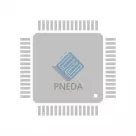 |
3984 | PLATINUM RTD SENSOR - PT1000 - 3 | 7452 More on Order |
 |
3721 | DIGITAL TEMPERATURE AND HUMIDITY | 5958 More on Order |
 |
3942 | HC-SR04 ULTRASONIC SONAR DISTANC | 7440 More on Order |
 |
3239 | 802.3AF POE OUTPUT DATA & POWER | 4482 More on Order |
 |
410 | ELECTROLUMINESCENT WIRE WHT 2.5M | 2916 More on Order |
 |
1051 | ADDRESS LED MATRIX I2C YLW-GRN | 7344 More on Order |
 |
870 | ADDRESS LED MATRIX I2C RED | 4752 More on Order |
 |
1632 | ADDRESS LED MATRIX I2C GREEN | 5508 More on Order |
 |
2874 | ADDRESS LED RING 1/4 SER RGBW | 6336 More on Order |
 |
2963 | ADDRESS LED STRIP SERIAL RGB 1M | 6174 More on Order |
 |
1612 | ADDRESS LED MODULE SER RGB 1=5 | 7488 More on Order |
 |
3853 | CONVEX GLASS LENS WITH EDGE - 40 | 7470 More on Order |
 |
3860 | FLEXIBLE SILICONE LED STRIP - 1 | 7776 More on Order |
 |
3866 | FLEXIBLE SILICONE NEON-LIKE LED | 8280 More on Order |
 |
3867 | FLEXIBLE SILICONE NEON-LIKE LED | 6678 More on Order |
 |
1303 | DISPLAY PIXEL QI 1024X600 3MODE | 8010 More on Order |
 |
2088 | DISPLAY TFT 1.44 COLOR MICROSD | 5508 More on Order |
 |
358 | LCD TFT 128X160 1.8"" | 8442 More on Order |
 |
1815 | 10 SEGMENT LIGHT BAR BLUE | 2574 More on Order |
 |
498 | RGB BACKLIGHT NEGATIVE LCD | 8892 More on Order |
 |
1819 | LED MATRIX 8X8 SQUARE YELLOW | 2718 More on Order |
 |
2276 | 64X32 RGB LED MATRIX - 6MM PITCH | 7542 More on Order |
